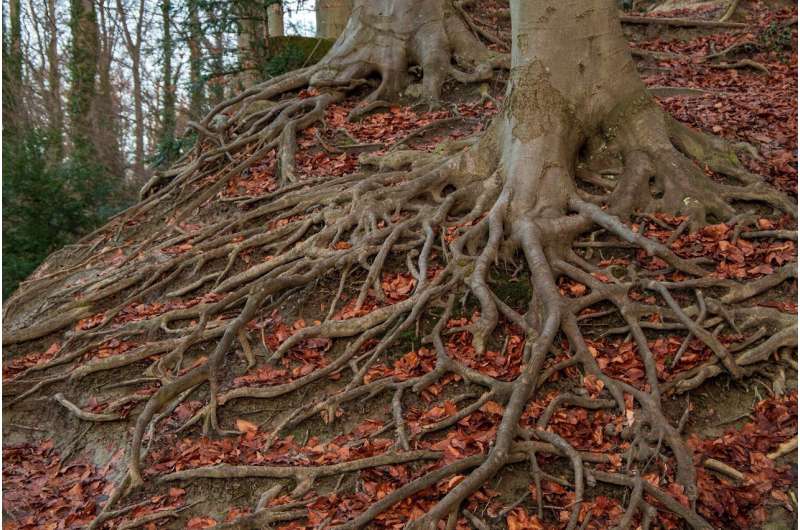
New research from The University of Western Australia has examined how fine root lifespan is linked to root strategies of resource acquisition and protection.
Emeritus Professor Hans Lambers, from UWA’s School of Biological Sciences, was co-author of the study published in Proceedings of the National Academy of Science.
“How the lifespan of roots is related to the strategies roots use to acquire nutrients from the soil is largely unknown,” Professor Lambers said.
“We compiled the most comprehensive dataset of what roots absorb over their lifespan from 98 observations of 79 woody species using underground recordings of roots across 40 sites.
“Our study then linked average root lifespan to other plant traits to address questions of what regulates root lifespan on a large spatial scale.”
The study found median root lifespan decreases with plant investment in more metabolically active compounds, such as root nitrogen, but increases in plants that have a reliance on symbiotic fungi.
“Previous theories have suggested plant organ structure and function together with root traits play a role in lifespan, but our study found there was no correlation,” he said.
The study also found there was no link between fine root and leaf lifespan except among evergreen species.
“This suggested that the environment has influenced evolutionary selection in different ways aboveground compared to belowground,” Professor Lambers said.
“We also found the root lifespan was typically longer in places with a lower mean annual temperature and higher average yearly rainfall.”
The results of the study will help to identify key variables and environmental drivers of root lifespan and understand how the ecosystem responds to climate change.
More information:
Jiawen Hou et al, Linking fine root lifespan to root chemical and morphological traits—A global analysis, Proceedings of the National Academy of Sciences (2024). DOI: 10.1073/pnas.2320623121
Journal information:Proceedings of the National Academy of Sciences
Provided by
University of Western Australia

READ MORE
How to Keep Roaches Away and Prevent Infestations
Unless you like to keep cockroaches as pets, it’s best to prevent them from invading [...]
The Legend of Limberlost
My dear Girl:In the first place will you allow me to suggest that you forgethereafter [...]
Are You Smarter Than Your Grandfather? Probably Not.
IQ scores have significantly risen from one generation to the next. Getty Images / Brand [...]
How Ice Cream Works
A new soft electronic material for human-machine interfacing
PhD Student Morteza Alehosseini, DTU Health Tech, demonstrates that CareGum is very stretchable. Credit: DTU [...]
Is what we’re recycling actually getting recycled?
How do you know whether your recyclables are actually being recycled rather than being dumped [...]
Ask Smithsonian: Are Cats Domesticated?
Given the subjective nature of the question, there may never be an answer as to [...]
10 Strangest Mass Hysterias
Teenage girls and women scream during a Beatles visit to Toronto in the 1960s. Mass [...]